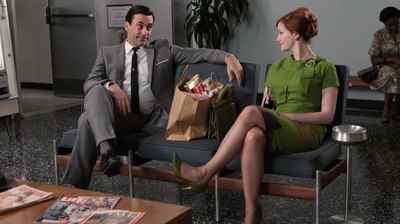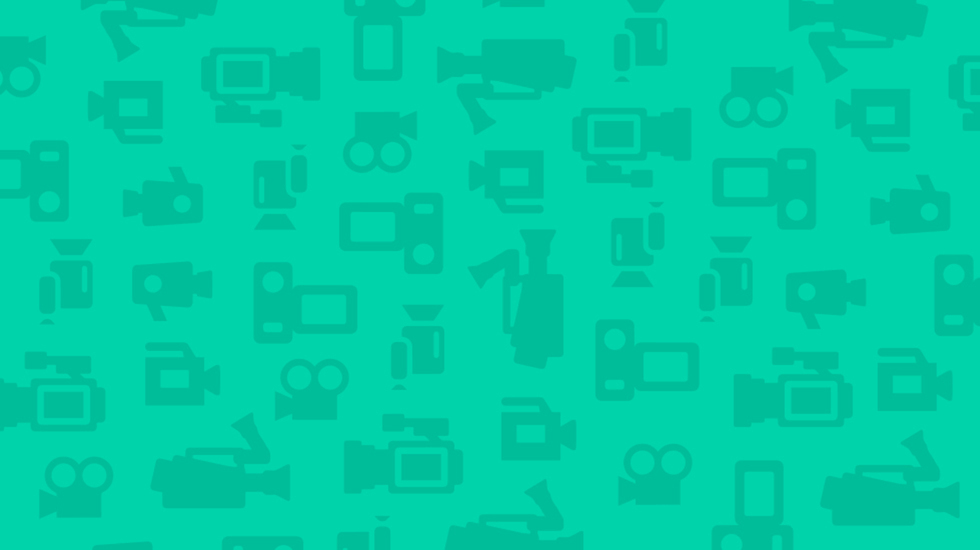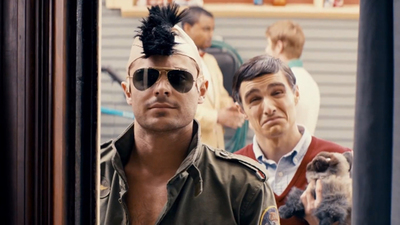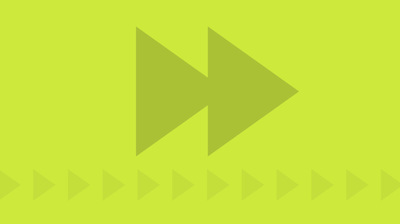
BY THE EDITORS |
We Asked the TFF2014 Filmmakers: “What New/Recent Filmmaking Technology Influenced Your Movie?”
From the latest digital cameras to social networking, TFF 2014 filmmakers share what technology they used to help them on their storytelling journeys.

Technology is constantly changing, providing filmmakers with more ways to bring their stories to life. So we looked to the TFF 2014 filmmakers to find out the latest filmmaking technology they used on their movie.
"Like most filmmakers today, we used the latest digital cameras available and had a tapeless workflow. But the biggest influence was from what turned out to be a very successful Kickstarter campaign. We became the 4th most-funded doc in Kickstarter history (at the time) and raised almost $250,000 from over 3000 people worldwide. Yes, the funding was incredibly helpful, but the show of support and good will from Randi’s fans and the global skeptic and humanist community has been something that’s really fueled us. We can’t thank our supporters enough!"
- Justin Weinstein, An Honest Liar
"I live in Salt Lake City, the co- director Justin Weinstein lives in Brooklyn and our editor Greg O’ Toole lives in Oakland. During the year-long editing process, we would continually craft the story, discuss the narrative and watch cuts of the film. The best way to do this was via Skype. We were able to converse face-to-face as well as view edits and clips from the film."
- Tyler Measom, An Honest Liar
"The hand-held DSLR model helped a lot. We could run quicker, fit into smaller spaces and become generally less visible then a older technology sometimes required."
- Garrett Bradley, Below Dreams
"Time is a major theme in our film. New Delhi is rapidly modernizing, and many of the characters we filmed in the Kathputli Colony are a bit stuck in what the city perceives to be an archaic culture. These performers don't know what to do and wish they could just slow it all down. This inspired us to ahold of the only Phantom Flex camera in India. Lucky for us, a huge Shah Rukh Khan Bollywood production in Rajasthan got fogged in! We shot really beautiful slow motion footage, which we feel captures perfectly the artists' liminal state. "
- Jimmy Goldblum and Adam Weber, Tomorrow We Disappear
"I suppose the Alexa, and the latest in editing and post. But, again, since I have no experience pre- digital I have nothing to compare it with. "
- Angus MacLachlan, Goodbye to All That
"We used a lot of different cameras to create a mix media kind of feel to the film. Gopros, DSLRs, Camera Phones, Night vision consumer cameras, 'Run and Gun' News cameras were all used for different effects. "
- Alastair Orr, Indigenous
"We shot on a RED Epic camera at 5K quality. We edited on AVID."
- Ryan Piers Williams, X/Y
"New low interest loans for borrowing against your 401K."
- Andrew T. Betzer, Young Bodies Heal Quickly

"Probably the RED (EPIC) camera, which for the past few films has allowed me to shoot the very long takes that I like, but also retain the quality of the image. It has also closed the gap between how higher and lower budget films look too. This camera (as well as the Alexa and other such cameras) have truly revolutionized the industry. Also these cameras can be manipulated to look more and more like film too. I wanted a strong bold color palette in this film that you might find in some films from the 1970s, so we used an older lens from this time period with the EPIC to help us achieve this look."
- Ivan Kavanagh, The Canal
"With Beneath the Harvest Sky we were not always looking ahead in technology as much as we were trying to look back at some older technology that may help in accomplishing the look we were ultimately trying to attain. We hoped to capture images that helped convey the aged, abandoned look to the northern Maine towns we were shooting in. We did, however, shoot Beneath the Harvest Sky on the Arri Alexa--which we knew from our early tests in pre-production would give us enormous flexibility in low light situations. This was critical in our process, as we hoped to light as little as possible as we worked towards faster setups to give more time back to the actors to work on performance. We also strived to achieve a more documentary-like atmosphere, where actors would have a 360-degree environment to operate within."
Aron Gaudet & Gita Pullapilly, Beneath the Harvest Sky
"We started the project with crowd funding. It was only a small amount to get us started, but in the beginning it gave us a feeling of being invincible. We felt we could simply start working without the "approval" of all the financiers, producers, and so on."
- Sabine Lubbe Bakker and Niels Van Koevorden, Ne Me Quitte Pas
"We shot on Canon 5Ds, which our two genius DPs Benoît Peverelli and Niko Tavernise both know inside out. They allowed us to do stuff at night in moving cars that would have been all but impossible on film. Sometimes we would run two cameras at once--Benoît and Niko would set a frame for the A camera, Niko would shoot the coverage, and Benoît would improvise 'fly on the wall' approaches with a second camera (on a slightly longer lens) which gave us closeups and alternative angles that were full of surprises. These guys were constantly innovating and pushing the technology and the language of the film. They were just brilliant and both are going to be making amazing looking movies for a long time to come."
- Sean Gullette, Traitors
"Spectral Analysis on RX3 software made clean up of production sound tracks more productive."
- Jody Lee Lipes, Ballet 422
"Social networking played a huge part in our work. I made a contract with Paxx, one of our subjects, through Instagram while I was in Vermont, and he in San Juan. No one at any of the outreach centers we visited in Puerto Rico knew of anyone who identified as a trans man, and for so long that perspective had been missing in our film. I remember we had just returned from filming when I made contact with him online, immediately I called Antonio and said, 'we have to go back, I've just found someone very special on Instagram and we need him.'"
- Dan Sickles, Mala Mala

"The technology is just a tool. On the one hand, we saved money going digital and shooting HD. But, I was also very stubborn about shooting with anamorphic lenses. It cost a lot more, but I wanted that scope."
- Christopher Denham, Preservation
"We were able to salvage and restore some amazing, never-before-seen footage."
- Mike Fleiss, The Other One: The Long, Strange Trip of Bob Weir
"We relied heavily on Dropbox to share files and organize our work, and Final Cut to edit. We have been using Facebook, Twitter and other forms of social media to get the word out about the film. The graphic designer did truly magical things with various software tools."
- Nancy Kates, Regarding Susan Sontag
"Sony F55, a real honey."
- John Dower, Slaying the Badger
"We were the diametric opposite of cutting edge on this film; if anything, we were completely retro. We went out of our way to be analog in this digital age! We had to be with this film to protect the story and the subjects. We tried to remain largely offline throughout the whole project--we didn't post anything on Vimeo, or do a Kickstarter campaign. But we did encrypt our drives in case anything untoward happened. We're grateful TrueCrypt was invented!"
- Johanna Hamilton, 1971
"We used an Alexa as camera. I never shot video before, but well, at this point, it's kind of turning into the last guy still making records on tape. And I guess if Neil Young can record his records digitally, it just might be time to make movies like that as well. Sorry, film."
- Dito Montiel, Boulevard
"We at one point debated a Kickstarter campaign, but in the end we found more traditional financing streams. I can't say the Alexa was particularly new, and we edited on an old school avid. I'm fairly new filmmaker, so I'm not very ahead of the curve when it comes to technology. In the end, this was really an old fashioned effort: actors and crew getting together to bring a script to life."
- Stephen Belber, Match
"Two key pieces of technology were: The ARRI Alexa cameras which are amazing in low light. When you shoot in ARRIRAW it allows you to spend a bit less time lighting when you're under the gun on time... When needed, I was able to manipulate the image (light, color) a little more in post. Social media. I know that probably seems like a cliche these days, but there were a lot of people who have social "reach" who tweeted about the trailer. People like Eli Roth, Dane Cook, Whitney Cummings, etc... Our trailer soared past one million views in the first week that it was posted. That was all thanks to word-of-mouth."
- Jordan Rubin, Zombeavers
"In this day and age, there are a lot of new cutting edge cameras that allow independent filmmakers to shoot high quality footage while still remaining very mobile. The Sony FS-700 anf the Canon 5D Mark III were the two cameras we mainly used, and they were perfect for this project."
- Nicholas Mross, The Rise and Rise of Bitcoin
"Working with a crew of four people on a feature film of this kind just wouldn't have been possible even ten years ago. The fact that we managed to shoot on the RED Epic at 5K aith a miniscule crew of self-taught filmmakers gives me a feeling of immense pride. Also, thinking about it, I'm not sure how on earth we would have been able to contact the football federation of a tiny island in the Pacific before the advent of Facebook. So thanks for that, Mr. Zuckerberg."
- Mike Brett, Next Goal Wins

"There's simply no way we could have shot Next Goal Wins on film-shooting the way we did, and where we did (on a tiny island in the South Pacific) we had to work with digital cameras. That we were able to use the RED Epic was a massive help to our shooting methods. Its size and weight meant we were able to take it up a mountain, in to the sea, and on tiny six seater propellor-planes, all the while capturing the amazing beauty of American Samoa in incredible detail."
- Kristin Brodie, Next Goal Wins
"We had almost no time to prepare for this shoot, two weeks at the most, so selecting the right camera format and shooting kit knowing we were flying to an island where there would be no support was a big challenge. Technology moves so fast these days that this won't be new to many of the readers now, but when we chose the RED Epic it was still in its Beta phase so it was a big risk. At the same time, though, we knew that no other camera could give us the same quality of image coupled with such lightweight flexibility on the ground. We received one of the first cameras off the production line but most of the peripherals that are now available hadn't been released or invented yet, meaning our final few days before departure were largely spent scratching our heads in a camera rental house, trying to figure out the configurations to get the job done."
- Steve Jamison, Next Goal Wins
"Shooting digitally lets me have as many takes as time allows. For comedy, that's so important. Some of the funniest lines and moments in Intramural were freebies on take 7, 8, 9 or higher. Line-o-ramas, improvisation, and straight-up screwing-around wouldn't be possible if we had to worry about how many feet of film were left in the budget. We raised over $50,000 on Kickstarter to help pay for lights, music, and a 2nd camera. Having two Red Epics on the football portion of the shoot was crucial. We have so many plays in the movie, and we shot it like you would a game, with one camera on the sideline and another in the endzone."
- Andrew Disney, Intramural
"Well, we used about 9 different cameras. Not necessarily a good thing, but we were shooting in a lot of different countries and it was important to have options."
- Jessica Yu, Misconception
"I love the look and feel of film, but as fewer film labs available for processing, digital filmmaking is just a more affordable option for indie film. We shot Honeymoon on the Alexa Plus. My DP Kyle Klütz and I really didn't consider any other digital camera. The Alexa can capture an amazing amount of information in low light, which was important for what we ultimately wanted to be the "look" of the film. We were inspired by the interior night lighting in Amour and tried to achieve a similar effect of lifted, milky, low contrast darkness."
- Leigh Janiak, Honeymoon
"Facebook! I messaged so many drag queens on it. At one point, we were down to meet up with literally anyone who would write back."
- Antonio Santini, Mala Mala
"We used a new state of the art digital camera, ARRI Alexa with vintage Cooke lenses."
- David Lascher, Sister
"We shot with two cameras (Sony F3 with S-Log) on almost everyday, doing takes of up to 40 minutes. I think our case is one that was blessed by digital filmmaking, because we were able to shoot extremely long takes without taking our actors out of the moment or disrupting the flow of the scene."
- Keith Miller, Five Star
"Still phot camera DSLR (Digital Single Lens Reflex Camera) which being whit Ptool software created by Vitaliy_Kiselev (online friend Internet user). Final Cut Pro X could edit the AVCH code footage directly."
- Midi Z., Ice Poison (Bing Du)
"The invention of the camera phone and, with it, the idea that we are constantly living and documenting our lives at the same moment is something that continually fascinates me."
- Jesse Zwick, About Alex
"I might be the wrong person to answer this. I started making my film 30 years ago using a Betamax black and white video camera. I think I covered every format since, including video 8, hi-8, DV cam, Super 8 film and reel to reel tape recorders. Now that's cutting edge."
- Lloyd Handwerker, Famous Nathan
"None. If anything, we took a step backwards. Though we easily could have shot this film on any one of the new sexy large-sensor cameras, I deliberately did not want the film to have a slick look. I went with a small sensor, run-and-gun camera because I wanted the film to feel scrappy and underdog just like the campaign and to heighten doubts about the ultimate outcome of the election. Shallow depth of focus also makes subjects look more heroic but I wanted to keep Michael grounded and human and let the viewers draw their own conclusions about him."
- Kevin Gordon, True Son

"I shot the entire film on a Canon 5D Mark II on my shoulder and a bag full of batteries on my back. No lights, no crew, no second camera. It is just me, my camera, and Garnet. With a documentary like this, the relationship between subject and filmmaker is absolutely integral: the film's power comes from Garnet's willingness to express and admit his most personal desires and shortcomings to the camera. DSLR cameras do, of course, have their technical limitations but I have been constantly surprised by their ability to capture stunning images, enable a level of intimacy between filmmaker and subject that is often difficult to achieve, and ultimately allow stories to be told that would previously have been impossible."
- Ed Perkins, Garnet's Gold
"Champs was shot on the highest quality cameras and lenses, like the RED Epic & Alexa, as well as utilized some of the industry's most talented graphic designers, which is unusual for most documentaries. The impetus behind utilizing such unique techniques for the film comes from striving to give a documentary film the same entertainment value as a first class narrative feature film. I want to break away from what is expected in the genre and visually stun the audience by heightening the production value and artistic look of the movie. In my opinion, there is no reason that a lower budget film shouldn't give the audience an enhanced visual experience that only goes towards enriching the story."
- Bert Marcus, Champs
"Crowd-funding had a huge influence on our film. We used Kickstarter to raise the gap money we needed to greenlight the film. It also acted as a publicity tool and brought a lot of eyes to the project. New digital cameras were also a huge influence: we shot on a Canon C300 thanks to a generous grant from Canon and Film Independent, and also used a Go-Pro for key underwater shots. These small cameras were crucial for the places and conditions we were shooting in. We needed to be as mobile as possible."
- Josef Kubota Wladyka, Manos Sucias
"I shot the film on a Sony F3 camera, with a Super 35mm sensor. It's a great image, but a big, heavy camera."
- Jesse Moss, The Overnighters
"With my Finnish DOP Tuomo Hutri, we chose ARRI Alexa. It is in the midway of luxury and convenience for an independent film. However, later we felt that we needed more "documentary" shots on the road and for that we took cheaper RED. What was most interesting for me, was the possibility to have a steadycam all the time with us. As DOP and steadycam operator (Ants-Martin Vahur) where good friends, this created good synergy in the camera department. Of course, it means that we didn't have dollies and rails."
- Ilmar Raag, I Won't Come Back
"I can't say influenced, we used ARRI Alexa and handheld camera all the time. But I think film must be shot on film."
- Tinatin Kajrishvili, Brides
"Shooting with Canon 5D Mark IIs and IIIs made this film possible. Most times, people had no idea we were filming rather than shooting photos. We also were only able to start the edit of this project with funding via a Kickstarter campaign. Social media also proved critical. Upworthy.com featured our teaser in 2013 and in one week we had over 25,000 hits on our 3 minute promo video."
- Sanjay Rawal, Food Chains
"We used FLIR (Forward Looking Infrared) high-definition thermal cameras that were specially adapted so we could literally see CO2 and methane. We used drones extensively, cameras hidden in water bottled and buttons. We modified underwater scooters so world-champion freedivers, including one who trains Navy Seals, could travel at incredible speeds underwater to keep up with blue whales. The film is a result of watching too many James Bond movies and Jacques Cousteau specials."
- Louie Psihoyos, 6

"I used a handheld Canon 5D camera for shooting the documentary. I really think that using this camera gave me the story I got...if I used a full set up with lights and boom mics and people on set, it would have been a whole other documentary. I was striving for intimacy, and using this camera helped me achieve that."
- Brent Hodge, A Brony Tale

